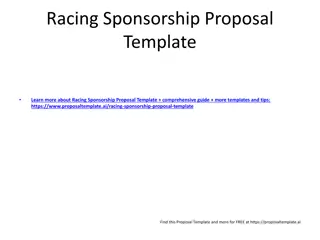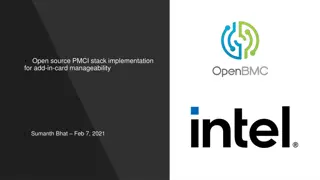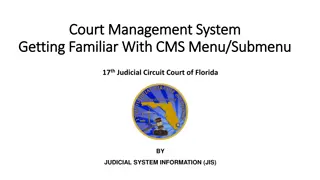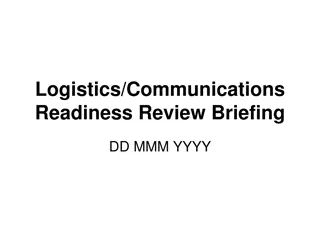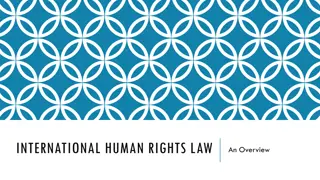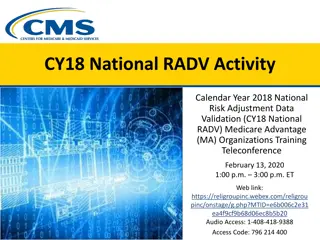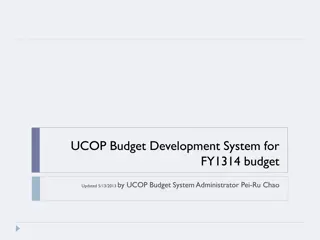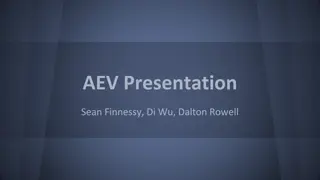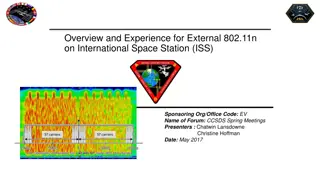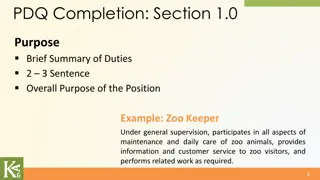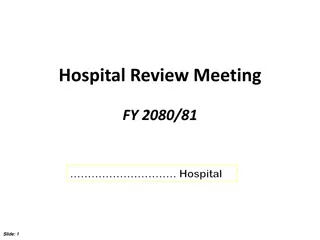National Health Systems Resource Centre
National Health Systems Resource Centre (NHSRC) plays a crucial role in supporting the implementation of health system initiatives in India. Established in 2007 as an autonomous society, NHSRC focuses on technical assistance, policy development, and coordination activities in collaboration with the Ministry of Health and Family Welfare. With a multi-disciplinary team, NHSRC aims to address health systems' needs, promote community processes, enhance the quality of care, and facilitate human resource management in healthcare settings through innovative approaches.
Download Presentation

Please find below an Image/Link to download the presentation.
The content on the website is provided AS IS for your information and personal use only. It may not be sold, licensed, or shared on other websites without obtaining consent from the author.If you encounter any issues during the download, it is possible that the publisher has removed the file from their server.
You are allowed to download the files provided on this website for personal or commercial use, subject to the condition that they are used lawfully. All files are the property of their respective owners.
The content on the website is provided AS IS for your information and personal use only. It may not be sold, licensed, or shared on other websites without obtaining consent from the author.
E N D
Presentation Transcript
The NRHM (NHM) PARADIGM FIVE MAIN APPROACHES MONITOR, MONITOR, PROGRESS AGAINST PROGRESS AGAINST STANDARDS STANDARDS FLEXIBLE FINANCING FLEXIBLE FINANCING COMMUNITIZATION COMMUNITIZATION 1. 1. Setting IPHS Standards 2. 2. Facility Surveys 3. Quality Assurance Mechanisms 4 4. Resource support to reach standards 5. 5. Independent Monitoring Committees at Block, District & State levels 1. 1. Untied grants to institutions/RKS 2. 2. Facilitate Approval of new components 3. 3.Sanctions made on basis of Centre and state plans 4. 4. Risk Pooling 5 5.Demand side financing money follows patient 6. 6. More resources for new reforms 1. 1. Decentralized planning, 2 2.Hospital Management Committee/ PRIs at all levels. 3 3. ASHA/VHSNC/MAS 4 4. Untied grants to Village committees. 5 5. Increased NGO participation 6. 6. Community Monitoring. INNOVATION IN INNOVATION IN HUMAN RESOURCE HUMAN RESOURCE MANAGEMENT MANAGEMENT IMPROVED IMPROVED MANAGEMENT MANAGEMENT THROUGH CAPACITY THROUGH CAPACITY 1. 1. More Nurses at all levels local Resident criteria 2. 2. Multi-skilling male paramedical and rationalization of workforce. 3.Full utilization of AYUSH potential 4. 4. Creating specialists skill sets 1. Block & District management units 2. 2. NGOs in capacity building 3 3. Strengthening SIHFW/NIHFW 4 4.NHSRC / SHSRC / DRG / BRG 5 5.Continuous skill development support
SECONDARY HEALTH CARE/SELECTE D TERITARY CARE/REFERRA LS . PRIMARY HEALTH CARE Rural and Urban (Metro/Non- Metro) COMMUNITY PROCESSES Rural and Urban (Metro/Non- Metro) MEDICINES / DIAGNOSTICS / DEVICES QUALITY OF CARE HUMAN RESOURCES MULTI SECTORAL CONVERGENCE INFORMATION TECHNOLOGY PARTNERSHIPS FINANCE
About NHSRC- 2007.. Autonomous; registered as a Society, with Secretary (HFW) as Chair and AS&MD as Member Secretary 21 member Governing Body with nine public health experts and the rest - officials from states/center Multi-disciplinary team community development, Social sciences health economics/finance, public health/community medicine, Biomed engineering, For the North East- the North East Regional Resource Center serves a similar role
Three Broad Objectives Respond to health systems technical assistance needs of States and MOHFW Policy and Strategy Development Coordination of technical assistance activity. Undertaken in collaboration with corresponding divisions of the MOHFW
Role of NHSRC Implementation support Corrective action and problem-solving through systematic field-based mentoring and handholding Decentralization, enabling local adaptation, planning and nurturing innovation Drafting protocols and guidelines that are evidence based and are operationally feasible Following up through orientations and facilitating implementation. Advocacy for change/programme- explaining it to all who are involved or concerned. Monitoring and rapid appraisals for course corrections and to improve programme design. Building up a team at state who can carry the work forward by institutionalizing the change Assessing implementation effectiveness, enabling evidence based modifications in programmes and policy Document experiences : studies, appraisals, and disseminate through publications. .
COMMUNITY PROCESSES/ COMPREHENSIVE PRIMARY HEALTH CARE HEALTH CARE FINANCING QUALITY IMPROVEMENT PUBLIC HEALTH PLANNING/ KNOWLEDGE MANAGEMENT CELL HEALTH CARE TECHNOLOGY HUMAN RESOURCES FOR HEALTH/HEALTH POLICY AND INTEGRATED PLANNING PUBLIC HEALTH ADMINISTRATION 8
Distinguishing between the roles of NHSRC and NIHFW Apex Institution for Capacity Building Supervise District Training Centers and Regional Training centers Supervise Pre-service training programmes Continuing medical education programmes Health Management training programmes Supervise Multi-skill programmes Periodic skill upgradation of cadres at district levels and above: design of training programmes and training material, training of master trainers Involved in curriculum development for MPW- Male.
Community Processes/ Comprehensive Primary Health Care Nodal institution for policy support and programme implementation for community processes ASHA, ASHA Facilitator, Block and District Community Mobilizers, and State ASHA Resource Centres Community organizations: Village Health, Sanitation, and Nutrition Committees/Mahila Arogya Samities Jan Arogya Samities (JAS): Facility level Committee for Health and Wellness Centers Rogi Kalyan Samities: Facility Level committees at CHC, DH and DH. Build a pool for national trainers and Train state level trainers Hub for Innovation and learning Centres (ILCs) - serve as labs for change management related to Health and Wellness Centre Implementation Support for implementation to operationalize AB-HWC across the nation
Healthcare Technology (A WHO Collaborating Centre for Priority Medical Devices & Health Technology Policy) Biomedical Maintenance and Management Program ensures an uptime of 95% for all equipment from a DH to a PHC. Implemented in 27 States- 21 States-PPP, 6 -In-house; Free Diagnostic Service Initiative focusses on in vitro diagnostics and radiology services (Teleradiology & CT Scan) from Sub center to District Hospital level. Pradhan Mantri National Dialysis Program supports hemodialysis services at district level. Peritoneal Dialysis now recently added AERB compliance for public health facilities ensures safe use of X-Ray emitting equipment Technical specifications of IPHS listed equipment using WHO Template supports procurement of standardized equipment in states.
Healthcare Financing National Health Accounts Technical Secretariat Produce Annual National & State Health Accounts estimates Monitor financing from Union and State Government Monitor Key Financing Indicators for SDGs & UHC Out of pocket expenditures Burden of Household payments (catastrophic and impoverishment) Capacity building on state Health Accounts Review of Public Expenditure /Government Health Expenditure Study on Public Private Partnerships in Health Care
Human Resources for Health Support strengthening of systems for HRH: Developing guiding principles for NHM workforce management Facilitating recruitment and retention of HR including specialists Panel of HR recruitment Agency for Recruitment Services Model contract, job responsibility and suggested performance appraisal indicators Minimum Performance Benchmark Capacity building of HR nodal (Regular and NHM) through yearly HR Bootcamps Behaviour Standards for Patient centric and value driven care Overall assessment of PIP for HRH and PM under NHM Document good practices in HRH and planning Assessment of Conditionalities on which 20% of NHM funds are disbursed
Public Health Administration Strengthening health systems through improved governance Strengthening Secondary Care services Administration of Public Health Programmes Public Health Management Cadre Developing Models (Model Health Districts) Urban Health Legal Framework
Quality Improvement Support in improving Quality of Care (QoC) at Public Health Facilities Setting National Quality Assurance Standards (NQAS) for different level of health facilities DH, SDH, CHC, PHC, Urban PHC and HWC (under finalisation) Technical assistance for NQAS implementation : creating a national and state level assessor pools LaQshya Implementation for improving care around birth at High case-load facilities (including Medical Colleges) NQAS and LaQshya certification Kayakalp initiative for improving the Swachhata and strengthening infection control practices Mera-Aspataal patient feedback system Certification of AEFI (Adverse Event Following Immunisation) Surveillance System
Knowledge Management Functions Common Review Missions Programme Appraisals and Assessments Secondary Data review Handholding and championing innovations: NHINP/Best Practices workshops Support Implementation Research for Health Systems Strengthening Enable states to access knowledge partners Support for NHM funded research to states
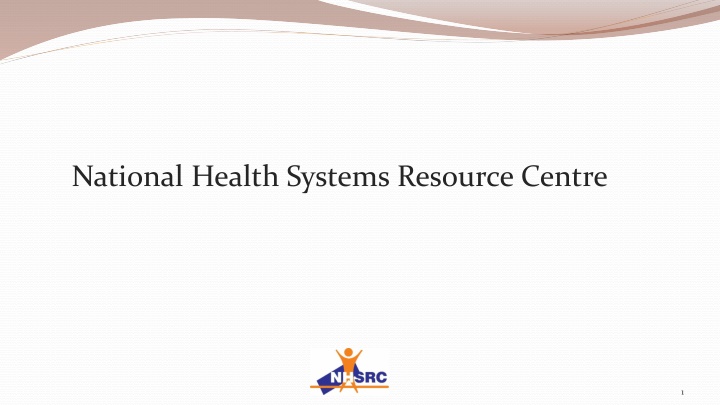

![❤[READ]❤ Deep Space Craft: An Overview of Interplanetary Flight (Springer Praxis](/thumb/21511/read-deep-space-craft-an-overview-of-interplanetary-flight-springer-praxis.jpg)



